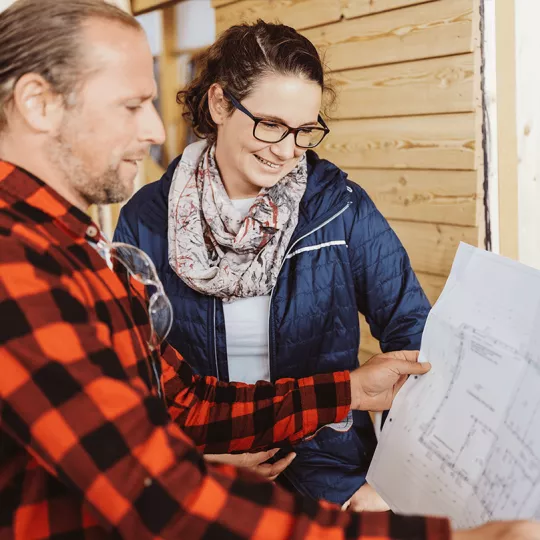If you’re in the market for construction equipment, you’ve got more options than just buying new from a dealership.
Choosing to go the pre-owned route comes with a bunch of perks, like saving a ton of cash and still getting machinery in great working condition. With proper care and maintenance, your used equipment can be a trusty workhorse for years to come.
Let’s dig into the ups and downs of getting used heavy machinery for your projects.
The wallet-friendly option
The sweet price tag is one of the biggest draws of buying used construction equipment. Like cars, heavy machinery loses a chunk of its value as soon as it rolls off the lot. We’re talking about a depreciation of up to 40 per cent in the first few years!
But here’s the silver lining: many of these machines are still in top shape and ready to work hard for a fraction of the cost of a brand-new model.
Before you decide, think about how long you’ll need the equipment. Is this a short-term gig, or will you be using it regularly for the next few years?
Compare the costs of renting or leasing with buying, including storage and upkeep expenses. More often than not, purchasing used can save you a bundle, giving you the same power and productivity at a lower price.
So many choices, so little time
One of the best parts of shopping for used equipment is the sheer variety. You can find everything under the sun from second-hand dealers—from excavators and tracked loaders to traffic management equipment and concrete barriers. It’s like being a kid in a candy store but with heavy machinery.
And better yet, you’ll come across all of your favourite brands like Kubota, Kobelco, Yanmar, Sumitomo, AUSA and many more, all offering equipment with bells and whistles similar to the newer models but without sticker shock.
Used equipment not only lets you choose from a wider selection but also helps you snag a deal on relatively recent models with plenty of advanced features. This means you can have your cake and eat it too—enjoying modern technology without blowing your budget.
But there are some drawbacks…
As fantastic as buying used machinery can be, it has its pitfalls. The main concern? You can’t always judge a machine’s true condition through a screen. Sure, those online listings look great, but it’s crucial to see the equipment in person whenever possible. You want to know exactly what you’re getting into before signing on the dotted line.
Tyres that look like they’ve seen better days, hydraulic hoses showing some leakage, or batteries that look a little worse for wear—these are all things to expect.
That said, you should still do a thorough inspection. Kick the tyres, check the oil, and take it for a spin! Make sure there are no weird noises, the brakes work, and all the safety features are good to go.
Better yet, look for a used equipment specialist whose machines are well-maintained with a full-service history so you can be confident the machine is ready to go to work.
David from construction equipment supplier Orange Hire says that each one of their locations is fitted out with a 24-hour workshop for this exact reason, so customers can rest easy knowing their machines are well looked after.
“Every machine in our used equipment sales programme has been maintained and inspected in accordance with manufacturer specifications. As a result, many operators of construction equipment prize our fleet for its quality and reliability,” he told Build-it.
How to check the equipment condition
When it comes to inspecting used equipment, channel your inner detective. Here are some key things to look for:
- Tyres: Are they worn down or cracked? You might need to budget for a new set.
- Bodywork: Look out for cracks, bends, or suspicious-looking welds. You don’t want any surprises here!
- Hydraulics and Connections: Check for leaks in the hoses or damaged chains. This machinery needs to stay as tough as you are!
- Overall Performance: Test drive it! Listen for any weird noises, make sure the brakes work, and double-check those safety features.
- Battery and Exhaust: Look for signs of wear or corrosion. And if you see unusual smoke from the exhaust, it’s probably not a good sign!
Finally, ask for the machine’s maintenance history. It’s like reading its diary—you’ll get the inside scoop on any repairs and see if it’s been pampered or neglected. If everything checks out, you can feel more confident about bringing your new (but used) equipment into the family.
At Orange Hire, David said that it was paramount buyers check records to ensure their equipment is maintained to meet OEM standards.
“We can provide customers with records that show a machine has received regularly scheduled preventive maintenance, including oil changes, air filter changes, fluid changes and other manufacturer-recommended service,” he added.
The bottom line
Buying used construction equipment can be smart if you do your homework and thoroughly inspect the machinery. You can save a lot of money and still get high-quality gear that’s ready to work as hard as you do. While there are some risks, the potential rewards are well worth it if you play your cards right.
So, go ahead and explore the world of used machinery. Who knows, you might just find the perfect piece of equipment that’ll help you get the job done without breaking the bank.








